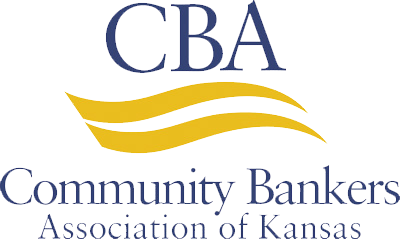By Richard Bratten, FSA, CFA, Regional Managing Director, Bank Compensation Consulting, an Endorsed CBA Provider
Congress Strikes!
The Consolidated Appropriations Act (CAA) was signed into law on Dec. 27, 2020. As you probably know, virtually any legislation passed at the federal level is a potpourri of goodies or, maybe not so goodies depending upon your point of view! The CCA included a change in the interest rates that are used by insurance companies for the purposes of determining whether a contract qualifies as a life insurance product under 26 U.S. Code § 7702. The immediate effect of this change is to reduce the relevant interest rate for one of these tests from 4% to 2% to reflect life insurance product economics in this ultra-low interest rate environment.
You’re probably wondering if this is something that only an actuary like myself would care about. While there may be something to that, this change is having immediate and profound effects on life insurance products, including single premium products such as Bank-Owned Life Insurance (BOLI) as well as individual whole life and universal life annual premium products. What does it all mean for you? Today, I’ll address the impact on BOLI products.
Chocolate Cake?
Many of you have heard me speak about BOLI like a chocolate cake. The single premium put into a BOLI policy creates the Cash Value (CSV), which is the chocolate cake. That chocolate cake comes with a thick layer of icing! The icing, in this case, is the Net Amount at Risk (NAR). That is the amount of additional life insurance that comes with the cake. The chocolate cake + the layer of icing adds up to the insurance policy’s total Death Benefit (DB). So, Entire Delicious Desert = Chocolate Cake + Icing and, Death Benefit = Cash Value + Net Amount at Risk.
Life Insurance is Special
Life insurance has some excellent tax benefits that reflect the long-standing tax policies supporting the ability for consumers to purchase affordable life-long permanent insurance coverage. One of these tax benefits is tax deferral. The Cash Value compounds that are within the policy, without being taxed along the way (I’m simplifying here — there are many rules governing the taxes/penalties you might pay if you withdraw cash or surrender the policy instead of holding it until the death of the insured person.) When the Death Benefit is paid out to a beneficiary(ies), that Death Benefit payment is generally not taxed.
Since life insurance gets this important tax treatment, the IRS has certain requirements to make sure that someone doesn’t create an investment product that they call “life insurance” just to get the tax-advantaged treatment. How does one test to see if something is an insurance product? Enter “26 U.S. Code § 7702, Life Insurance Product Defined,” or just 7702 as we call it.
One of the tests, and the one that is generally applied to BOLI products, goes like this: you must have a certain amount of icing on your cake. If you don’t have a thick enough layer of icing, then it’s not insurance. Pretty simple, eh? And you thought actuaries were so complicated.
Testing for Insurance
So what is the correct amount of icing needed for the chocolate cake? The test calculations vary for insurance policies based on the age and sex of the person being insured. For a 45-year-old male, the ratio of icing to cake has to be about 3 to 1. That’s a thick layer of icing! For a 65-year-old male, the ratio of icing to cake only has to be about one to one.
So for a 45-year-old male and a BOLI premium of $100,000, the NAR has to be at least about $300,000. That’s a lot of icing. That means a total Death Benefit of about $400,000.
For a 65-year-old male and a BOLI premium of $100,000, the NAR has to be at least about $100,000. Not as much icing is required. That means a total Death Benefit of about $200,000.
Actuaries design BOLI to tread as closely to that “minimum required icing” line as possible to keep the NAR down as low as possible (but still enough to qualify as life insurance.) Why? Because the less insurance benefit (NAR) that is provided, the less the charges that are taken out of the Cash Value to pay for the cost of that insurance benefit. Less charges taken out of the Cash Value can mean a higher net growth rate for the Cash Value. It is a lean insurance product, and that means better BOLI yields for you.
What Does This Change Mean For You?
So what does this change in the valuation interest rate mean to you? With this new, lower interest rate, the amount of icing required on your BOLI cake can be a lot less. One insurance company just provided illustrations showing that for a 45-year-old male and a BOLI premium of $100,000, the NAR will only have to be about $100,000 instead of $300,000! The result for this insurer is a higher return, on the order of about 0.15% in year one trending up to almost 0.40% in year 40.
Now be careful here; this isn’t necessarily going to be the same for every insurer. This particular insurer is also making some other changes to their product at the same time such as reducing the guaranteed minimum credited interest rate from 1.5% to 1.0%, and making some minor changes to their 1035 Exchange Charge schedule. The approach that each insurer takes to updating their insurance products will vary greatly. The impacts upon product returns will vary accordingly.
Different insurers will have different approaches to updating their products. Some will provide the opportunity for you to buy now and then and update your product later if you want, once the insurer figures out the new pricing. Some insurers may even offer you the choice to move your existing BOLI policy into the newly priced product if you’ve recently bought a policy within the last few months. Other insurers will give you a choice of buying now under the old rules or holding off to buy under the new rules in a month or two. Other insurers may offer other opportunities.
Next Steps
You should talk to your trusted BOLI advisor to see what this new development means for you. If you can’t name that advisor right now off the top of your head, then you should call me! My clients can tell you who I am because I provide the kind of proactive service that they count on. They pretty much know me as, “That guitar-playing, extroverted actuary (that’s NOT an oxymoron) with a bazillion miles on his truck because he’s always driving around to see us.” Give me a call and I’ll be happy to stop by (or Zoom if you prefer) and see you too!
Rich has worked in the Executive Benefits and Bank-Owned Life Insurance markets for over two decades and is an Endorsed Provider for the CBA. You can call Rich any time at 307-763-0070 or email him at rich.bratten@bcc-usa.com to discuss a new plan or to get advice on your existing situation!









